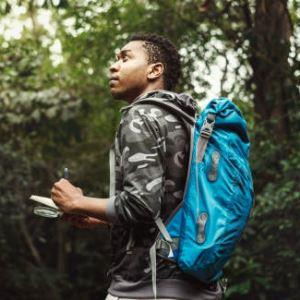 Kenya is an enchanting destination that effortlessly blends thrilling wildlife safaris with pristine coastal escapes. For Spanish travelers seeking an exotic yet accessible adventure, Kenya offers an unmatched combination of experiences that cater to nature lovers, cultural explorers, and relaxation seekers alike. Whether you're dreaming of tracking the Big Five in world-renowned national parks or lounging on white-sand beaches beside the turquoise waters of the Indian Ocean, Kenya delivers unforgettable moments at every turn. Begin your journey in the savannahs, where iconic reserves such as the Maasai Mara, Amboseli, and Tsavo await. Each park offers unique attractions: the Maasai Mara is famous for the Great Migration and its large predator populations; Amboseli offers panoramic views of Mount Kilimanjaro and close encounters with elephants; Tsavo’s vast wilderness is ideal for off-the-beaten-path exploration. Guided tours are widely available, and many can be tailored for Spanish-speaking tourists, enhancing comfort and understanding throughout the experience. After the thrill of safari, unwind along Kenya’s sun-drenched coastline. Diani Beach, with its swaying palms and vibrant marine life, is a top choice for water sports and relaxation. Watamu’s coral gardens make it a snorkeler’s paradise, while Lamu Island, a UNESCO World Heritage Site, offers a rich tapestry of Swahili culture and architecture. Each destination presents a perfect counterbalance to the rugged adventure of the safari circuit. One of the key advantages for Spanish travelers is the accessibility of Kenya’s tourism infrastructure. Many resorts and lodges now offer multilingual services, and several tour operators provide Kenya beach and safari packages for Spanish tourists. These packages often combine game drives with coastal stays, ensuring a seamless and stress-free vacation. Visitors can enjoy Swahili cuisine, interact with local communities, and take part in cultural festivities, deepening their appreciation for Kenya’s rich heritage. Spanish citizens are required to obtain an eVisa before traveling to Kenya. It's recommended to apply online in advance to avoid delays. Health-wise, yellow fever vaccination is mandatory for entry, and malaria prophylaxis is advised. Currency exchange is straightforward, with Kenyan Shillings widely used, though major credit cards are accepted in cities and resort areas. English and Swahili are the official languages, and you’ll find that many hospitality professionals speak basic Spanish or provide translation services. Kenya stands out as a premier destination where thrilling safaris and serene beaches come together. With a variety of travel packages tailored to their needs, Spanish tourists can look forward to an enriching and well-rounded African holiday experience.
Kenya is an enchanting destination that effortlessly blends thrilling wildlife safaris with pristine coastal escapes. For Spanish travelers seeking an exotic yet accessible adventure, Kenya offers an unmatched combination of experiences that cater to nature lovers, cultural explorers, and relaxation seekers alike. Whether you're dreaming of tracking the Big Five in world-renowned national parks or lounging on white-sand beaches beside the turquoise waters of the Indian Ocean, Kenya delivers unforgettable moments at every turn. Begin your journey in the savannahs, where iconic reserves such as the Maasai Mara, Amboseli, and Tsavo await. Each park offers unique attractions: the Maasai Mara is famous for the Great Migration and its large predator populations; Amboseli offers panoramic views of Mount Kilimanjaro and close encounters with elephants; Tsavo’s vast wilderness is ideal for off-the-beaten-path exploration. Guided tours are widely available, and many can be tailored for Spanish-speaking tourists, enhancing comfort and understanding throughout the experience. After the thrill of safari, unwind along Kenya’s sun-drenched coastline. Diani Beach, with its swaying palms and vibrant marine life, is a top choice for water sports and relaxation. Watamu’s coral gardens make it a snorkeler’s paradise, while Lamu Island, a UNESCO World Heritage Site, offers a rich tapestry of Swahili culture and architecture. Each destination presents a perfect counterbalance to the rugged adventure of the safari circuit. One of the key advantages for Spanish travelers is the accessibility of Kenya’s tourism infrastructure. Many resorts and lodges now offer multilingual services, and several tour operators provide Kenya beach and safari packages for Spanish tourists. These packages often combine game drives with coastal stays, ensuring a seamless and stress-free vacation. Visitors can enjoy Swahili cuisine, interact with local communities, and take part in cultural festivities, deepening their appreciation for Kenya’s rich heritage. Spanish citizens are required to obtain an eVisa before traveling to Kenya. It's recommended to apply online in advance to avoid delays. Health-wise, yellow fever vaccination is mandatory for entry, and malaria prophylaxis is advised. Currency exchange is straightforward, with Kenyan Shillings widely used, though major credit cards are accepted in cities and resort areas. English and Swahili are the official languages, and you’ll find that many hospitality professionals speak basic Spanish or provide translation services. Kenya stands out as a premier destination where thrilling safaris and serene beaches come together. With a variety of travel packages tailored to their needs, Spanish tourists can look forward to an enriching and well-rounded African holiday experience.
Ultimate Guide to Kenya’s Top Holiday Spots and Activities
| Destination | Type | Top Activities | Ideal Travelers |
|---|---|---|---|
| Diani Beach | Beach | White-sand beaches, snorkeling/diving, kite surfing, spa, village tours | Luxury travelers, beach-lovers, families |
| Lamu Island | Beach/Cultural | Relaxing on Shela Beach, dhow sailing, kayaking, exploring UNESCO old town, Swahili cuisine | Honeymooners, cultural explorers, nature lovers |
| Maasai Mara | Safari | Big Five game drives, Great Migration viewing, hot-air balloon rides, Maasai village visit | Wildlife enthusiasts, adventure seekers |
| Amboseli | Safari | Elephant viewing with Kilimanjaro backdrop, game drives, birdwatching, cultural Maasai tours | Families, nature photographers, first-time safari-goers |
| Tsavo (East/West) | Safari | Safari drives, red elephant watching, Mzima Springs, birding, off-road adventure | Adventurous travelers, photographers, multi-destination safari planners |
Luxury Beach Escapes: Diani & Lamu Holidays for Spanish Travellers
For Spanish travelers craving an exotic blend of sun, culture, and relaxation, Kenya's coastal towns of Diani and Lamu offer idyllic beach escapes like no other. These destinations stand out not only for their natural beauty but also for their rich heritage and welcoming hospitality. Whether you’re looking to unwind after a thrilling safari or you’re visiting solely for the seaside atmosphere, Diani and Lamu promise experiences that are both serene and unforgettable. Diani Beach is often hailed as one of Africa’s most picturesque coastal destinations. Stretching along the Indian Ocean, this beach is known for its powdery white sand, swaying palm trees, and vibrant coral reefs. Spanish tourists can enjoy a range of activities, from kite surfing and paddleboarding to guided snorkeling and diving tours. The nearby Kisite-Mpunguti Marine Park is home to dolphins and sea turtles, offering unique marine encounters. Accommodations in Diani range from boutique beach hotels to luxury all-inclusive resorts, many of which now offer Spanish-language services to cater to the growing interest from Spain. Lamu Island, on the other hand, is a step back in time. As a UNESCO World Heritage Site, Lamu is rich with Swahili architecture, traditional dhows, and a laid-back rhythm that instantly transports visitors to a simpler, slower way of life. The island is car-free, with donkeys and boats serving as the main modes of transport. Spanish tourists often fall in love with its charming alleyways, ancient mosques, and rooftop terraces overlooking the ocean. The annual Lamu Cultural Festival, featuring music, dance, and dhow races, is a cultural highlight worth planning your trip around. Beyond the scenery, both destinations provide unique opportunities to engage with Kenya’s diverse cultural fabric. Spanish travelers can participate in Swahili cooking classes, visit local artisans, or explore historical sites like the Gedi Ruins and Fort Jesus nearby. The coastal cuisine, dominated by coconut-infused seafood dishes, is a culinary delight that reflects the blend of Arab, Portuguese, and African influences that shape the region. While both Diani and Lamu are distinct in character, together they showcase the best beaches in Kenya for Spanish tourists. Their combination of comfort, culture, and coastal charm makes them perfect for both romantic getaways and family holidays. With direct connections from Nairobi and a growing number of tour packages designed with Spanish travelers in mind, planning a beach escape to Kenya has become easier and more appealing than ever. These packages often include round-trip transfers, guided cultural experiences, and multilingual support that remove many of the typical barriers international tourists face. Diani and Lamu, with their unique offerings of luxury, history, and coastal beauty, provide an ideal setting for relaxation after a safari or as a standalone holiday. For travelers flying from Spain, major European hubs offer convenient one-stop connections to Nairobi and Mombasa. From there, short domestic flights or scenic drives bring you directly to these coastal gems. Whether you're a first-time visitor or returning to explore more of Kenya’s hidden treasures, Diani and Lamu stand as gateways to a memorable, sun-soaked adventure steeped in rich Swahili tradition and natural splendor.
Sun, Sea, and Swahili Culture: Exploring Kenya’s Diani and Lamu
Kenya’s coastal charm lies in more than just its beaches. Spanish travelers looking for a luxurious and immersive experience will find that Diani and Lamu offer not only sun and sea, but also a deep connection to Swahili culture and history. These destinations blend luxury, heritage, and coastal elegance, making them ideal for a well-rounded holiday. Here’s why Diani and Lamu are essential for a culturally rich beach escape:
- Swahili Architecture & Historical Sites: Lamu, a UNESCO World Heritage Site, is famed for its stone houses, ancient mosques, and narrow alleyways. This centuries-old town gives Spanish tourists a window into East Africa's Islamic and Arab-influenced past.
- Cultural Festivals: Events like the Lamu Cultural Festival celebrate local heritage through traditional dances, dhow races, and poetry readings. These provide an authentic experience unlike anywhere else on the continent.
- Local Cuisine Experiences: From coastal seafood dishes to Swahili street food, the culinary journey in Diani and Lamu is rich with flavor. Cooking classes and food tours are increasingly popular.
- Community Engagement: Guided village visits and artisan workshops offer Spanish travelers opportunities to interact with locals, gaining firsthand insights into daily life and crafts.
- Peaceful Luxury: Unlike more commercial beach destinations, both Diani and Lamu offer serene luxury. The accommodations here especially the boutique resorts and beachfront villas combine comfort with cultural authenticity, with some rated among the top luxury safari lodges in Kenya for Spanish tourists.
These elements together form a mosaic of experiences where sunbathing is complemented by soul-enriching cultural encounters. For Spanish tourists seeking a destination with depth, charm, and hospitality, Diani and Lamu are much more than just beach towns they’re gateways to Kenya’s coastal soul.
Safari Adventures: Maasai Mara, Amboseli, and Tsavo Expeditions
Kenya's national parks are among the most celebrated in Africa, and for Spanish tourists embarking on their first safari, they provide an unforgettable introduction to the continent’s rich biodiversity. The allure of wide-open savannahs, towering mountains, and teeming wildlife makes Kenya a dream destination for nature lovers. For those new to safari adventures, a well-planned visit to the country’s premier parks is the perfect way to immerse in Kenya’s natural splendor. The Maasai Mara National Reserve stands as Kenya’s most iconic safari destination. It is renowned for the annual Great Migration, during which over a million wildebeests, zebras, and gazelles traverse the plains. Beyond this spectacular event, the Mara offers consistent sightings of the Big Five: lions, elephants, leopards, buffalos, and rhinos. Spanish-speaking guides are increasingly available, allowing first-time visitors from Spain to fully appreciate the context and ecology of the region. Amboseli National Park, with its striking views of Mount Kilimanjaro, offers a different but equally compelling experience. The park is famed for its large elephant herds, which roam freely across the landscape. Photographers and wildlife enthusiasts will find Amboseli particularly rewarding, as the elephants often pose against the backdrop of Africa’s tallest peak. Birdwatchers will also be thrilled by the variety of avian species that call the wetlands home. Tsavo, which is divided into Tsavo East and Tsavo West, is the largest protected area in Kenya and offers a more rugged, less commercialized safari experience. Tsavo East is known for its red-dust elephants and vast open plains, while Tsavo West boasts lush greenery, volcanic landscapes, and the striking Mzima Springs. For Spanish tourists looking for a more secluded adventure away from crowds, Tsavo delivers exceptional wildlife viewing and untamed wilderness. Each of these parks showcases different aspects of Kenya’s natural beauty, making them ideal for a comprehensive safari itinerary. Whether you're watching lions hunt in the Mara, capturing a silhouette of an elephant in front of Kilimanjaro, or exploring the lava flows of Tsavo West, Kenya provides a sense of wonder that stays with you long after the journey ends. For those planning their first African wildlife journey, these are undoubtedly the best national parks in Kenya for first-time Spanish visitors. Each park offers a unique experience, from the iconic savannahs of the Maasai Mara to the elephant-rich plains of Amboseli and the untamed wilderness of Tsavo. These protected areas are not only rich in biodiversity but are also supported by well-established infrastructure that caters specifically to international guests. Spanish travelers will appreciate the growing availability of multilingual guides, making it easier to understand animal behavior, local conservation efforts, and the broader ecosystem. A diverse range of accommodation options from high-end safari lodges to budget-friendly eco-camps ensures that all types of travelers can find a comfortable and immersive base for exploration. With excellent internal flight connections and well-maintained road access, Kenya guarantees a safari experience that is smooth, safe, and thoroughly captivating for those discovering Africa for the first time.
Wildlife and Wonder: Big Five Safaris in Amboseli, Mara, and Tsavo
For Spanish tourists dreaming of Africa's legendary wildlife, Kenya offers an extraordinary opportunity to witness the majestic Big Five lion, leopard, elephant, buffalo, and rhinoceros in some of the continent’s most iconic landscapes. The trio of Amboseli, Maasai Mara, and Tsavo National Parks represents the pinnacle of safari experiences, each offering a unique natural theater for wildlife encounters. Amboseli National Park, located near the Tanzanian border, is famous for its scenic beauty, particularly the iconic views of Mount Kilimanjaro towering in the background. It is one of the best places to see large herds of elephants in their natural habitat. The wetlands here attract a variety of animals, from hippos to flamingos, offering rich photography and birdwatching opportunities. The Maasai Mara, bordering Tanzania's Serengeti, is synonymous with the Great Migration. Between July and October, Spanish visitors can witness this awe-inspiring spectacle as millions of wildebeests and zebras traverse the plains. Even outside migration season, the Mara is teeming with predators and prey, providing dramatic wildlife interactions. Tsavo National Park, Kenya’s largest, is split into Tsavo East and Tsavo West. Tsavo East is known for its red-soiled elephants and sweeping savannahs, ideal for game drives that feel adventurous and uncrowded. Tsavo West, on the other hand, surprises with lush greenery, lava flows, and the crystal-clear Mzima Springs, where you can spot hippos and crocodiles beneath the water's surface from an underwater viewing chamber. In all three parks, the diversity of flora and fauna is staggering. Spanish tourists will appreciate not only the big-game sightings but also the chance to encounter giraffes, zebras, cheetahs, hyenas, and hundreds of bird species. Many lodges and tour operators offer Spanish-speaking guides, ensuring a more engaging and informative experience for non-English speakers. These parks also contribute significantly to conservation efforts and community-based tourism, with many camps supporting local Maasai and Kamba initiatives. Visitors can choose from rustic tented camps to luxurious eco-lodges, all designed to immerse guests in the natural surroundings while ensuring comfort and safety. Combining the raw power of African wildlife with Kenya’s warm hospitality, these national parks deliver some of the most authentic and soul-stirring safari experiences available anywhere in the world. Spanish visitors are greeted not just by the majesty of nature but also by the genuine warmth of local communities and experienced guides, many of whom speak Spanish or offer translated services. From sunrise game drives across golden savannahs to evenings spent under starlit skies listening to the sounds of the wild, every moment on a Kenyan safari feels cinematic and unforgettable. For first-time or returning visitors from Spain, a Big Five safari through Amboseli, Mara, and Tsavo is not just an adventure but a deep connection to the rhythms of the natural world. Whether you’re photographing elephants with Kilimanjaro as your backdrop or marveling at a lion’s roar echoing across the plains, this journey leaves lasting memories and often inspires a lifelong love of African wildlife and conservation.
Family-Friendly Adventure: Kenyan Culture, Cuisine, and Nature
 Kenya is a destination that invites families to explore, learn, and bond while discovering the wonders of East Africa. Its unique combination of wildlife, culture, and coastline makes it a perfect vacation spot for Spanish families seeking both excitement and relaxation. From the savannah to the sea, Kenya delivers enriching experiences that span generations. A highlight for many families is the opportunity to witness wildlife up close. Game drives in child-friendly safari lodges offer thrilling views of elephants, lions, and giraffes in their natural habitat. Parks such as Lake Naivasha and Nairobi National Park are excellent for shorter safaris with younger children. These destinations often include nature walks, junior ranger programs, and storytelling sessions that make the bush experience both educational and entertaining. Beyond wildlife, Kenyan culture is an engaging tapestry that children and adults alike can enjoy. Family visits to Maasai villages allow for immersive learning through traditional dances, fire-making demonstrations, and beading workshops. Urban centers like Nairobi offer museums, giraffe centers, and elephant sanctuaries that provide insight into both wildlife conservation and Kenyan heritage. The coastal side of Kenya is equally welcoming to families. In Diani and Watamu, children can swim in calm, shallow waters or explore marine life in tide pools and coral reefs. Many resorts offer kids' clubs, family suites, and babysitting services, allowing parents some downtime while kids engage in supervised fun. For culturally curious families, Lamu presents a chance to explore historic Swahili culture through dhow rides and ancient architecture. Culinary exploration is another joy. Kenyan cuisine blends African, Arab, and Indian influences. Children may enjoy trying chapati (flatbread), nyama choma (grilled meat), and fresh tropical fruits. Participating in cooking classes or farm visits offers a memorable, hands-on experience for the entire family. Planning the right time to travel is key for a smooth family experience. The best time to visit Kenya for safari and beach holiday is during the dry seasons, from June to October and December to March. These months offer clear skies, comfortable temperatures, and excellent wildlife viewing perfect for both game drives and beach days. With its broad range of enriching experiences, welcoming communities, and accommodations tailored to families, Kenya offers an ideal destination for Spanish travelers of all ages. From the moment families arrive, they are met with warm hospitality, excellent service, and a variety of activities designed to engage children and adults alike. Safaris in national parks like Nairobi or Lake Nakuru often include child-friendly amenities and knowledgeable guides who help explain wildlife behavior in interactive ways, fostering a love for nature in young minds. Beyond the parks, the Kenyan coast provides additional layers of adventure. Whether building sandcastles on Diani Beach or snorkeling in the protected marine reserves of Watamu, coastal Kenya ensures that every family member has something exciting to do. Cultural experiences also enrich the trip: visiting traditional villages, participating in local crafts, or trying new dishes together creates lasting memories and strengthens family bonds. Kenya seamlessly blends educational value with genuine fun, ensuring that both children and adults return home with cherished memories and a deeper appreciation for Africa's natural and cultural wealth.
Kenya is a destination that invites families to explore, learn, and bond while discovering the wonders of East Africa. Its unique combination of wildlife, culture, and coastline makes it a perfect vacation spot for Spanish families seeking both excitement and relaxation. From the savannah to the sea, Kenya delivers enriching experiences that span generations. A highlight for many families is the opportunity to witness wildlife up close. Game drives in child-friendly safari lodges offer thrilling views of elephants, lions, and giraffes in their natural habitat. Parks such as Lake Naivasha and Nairobi National Park are excellent for shorter safaris with younger children. These destinations often include nature walks, junior ranger programs, and storytelling sessions that make the bush experience both educational and entertaining. Beyond wildlife, Kenyan culture is an engaging tapestry that children and adults alike can enjoy. Family visits to Maasai villages allow for immersive learning through traditional dances, fire-making demonstrations, and beading workshops. Urban centers like Nairobi offer museums, giraffe centers, and elephant sanctuaries that provide insight into both wildlife conservation and Kenyan heritage. The coastal side of Kenya is equally welcoming to families. In Diani and Watamu, children can swim in calm, shallow waters or explore marine life in tide pools and coral reefs. Many resorts offer kids' clubs, family suites, and babysitting services, allowing parents some downtime while kids engage in supervised fun. For culturally curious families, Lamu presents a chance to explore historic Swahili culture through dhow rides and ancient architecture. Culinary exploration is another joy. Kenyan cuisine blends African, Arab, and Indian influences. Children may enjoy trying chapati (flatbread), nyama choma (grilled meat), and fresh tropical fruits. Participating in cooking classes or farm visits offers a memorable, hands-on experience for the entire family. Planning the right time to travel is key for a smooth family experience. The best time to visit Kenya for safari and beach holiday is during the dry seasons, from June to October and December to March. These months offer clear skies, comfortable temperatures, and excellent wildlife viewing perfect for both game drives and beach days. With its broad range of enriching experiences, welcoming communities, and accommodations tailored to families, Kenya offers an ideal destination for Spanish travelers of all ages. From the moment families arrive, they are met with warm hospitality, excellent service, and a variety of activities designed to engage children and adults alike. Safaris in national parks like Nairobi or Lake Nakuru often include child-friendly amenities and knowledgeable guides who help explain wildlife behavior in interactive ways, fostering a love for nature in young minds. Beyond the parks, the Kenyan coast provides additional layers of adventure. Whether building sandcastles on Diani Beach or snorkeling in the protected marine reserves of Watamu, coastal Kenya ensures that every family member has something exciting to do. Cultural experiences also enrich the trip: visiting traditional villages, participating in local crafts, or trying new dishes together creates lasting memories and strengthens family bonds. Kenya seamlessly blends educational value with genuine fun, ensuring that both children and adults return home with cherished memories and a deeper appreciation for Africa's natural and cultural wealth.
Celebrations, Cuisine, and Community: Kenyan Experiences for All Ages
Kenya is more than just a land of wildlife and beaches it’s a vibrant tapestry of traditions, tastes, and togetherness that appeals to travelers of all ages. Spanish tourists looking to connect with local life beyond the typical tourist trail will find that Kenya offers countless ways to celebrate its culture, savor its cuisine, and engage with its diverse communities. One of the most immersive ways to experience Kenya’s spirit is by participating in local festivals. Events like the Mombasa Carnival or the Maralal Camel Derby showcase Kenya’s rich ethnic diversity and communal pride. These celebrations, filled with music, dance, and color, invite international visitors to take part in festivities that are both educational and exhilarating. Spanish travelers, in particular, often find these events reminiscent of their own regional festivals, creating an immediate cultural connection. Food is another gateway to understanding Kenya’s heritage. Culinary experiences range from open-air coastal seafood markets to hands-on cooking classes where visitors learn to prepare Swahili dishes like biryani, pilau, and samaki wa kupaka (coconut fish curry). The blending of African, Arab, Indian, and European influences reflects Kenya’s coastal history, making every bite a journey through time and culture. For Spanish visitors, this diversity resonates deeply, echoing the rich fusion of flavors found in Mediterranean cuisine. Community visits, particularly in rural villages or informal urban settlements, offer a respectful and insightful look into everyday Kenyan life. Local NGOs and responsible tour operators facilitate these visits to ensure they are ethical and mutually beneficial. Spanish travelers can engage in activities such as craft-making with local artisans, visiting community schools, or participating in sustainable farming practices. These experiences provide meaningful interactions that go beyond sightseeing, fostering mutual understanding and support. For multi-generational groups or families, these cultural engagements can be especially rewarding. Children may participate in dance workshops, storytelling circles, or wildlife conservation talks, while adults explore history, architecture, and the significance of communal life. The blend of learning, sharing, and celebrating brings a sense of connection that enhances the overall travel experience. Whether it's through dancing in a street parade, tasting chapati fresh off the grill, or sharing stories around a fire in a village homestay, Kenya’s cultural richness leaves a lasting impression. Spanish tourists who venture into these heartwarming spaces of celebration, cuisine, and community often return with not just photos and souvenirs, but a genuine bond with the people and the pulse of Kenya.
FAQs About Kenya Safari and Beach Combo for Spanish Tourists
Combining a safari with a beach getaway is one of the most rewarding ways to explore Kenya. Spanish travelers can experience the thrill of tracking lions on the savannah in the morning and relax on a white-sand beach by the Indian Ocean in the afternoon. With its well-developed infrastructure, friendly locals, and wide range of activities, Kenya is the ideal destination for a dynamic, all-in-one holiday. Below are six questions with expanded answers to help Spanish tourists plan a seamless and unforgettable adventure:
- What are the top safari parks to visit in Kenya for Spanish tourists? The Maasai Mara, Amboseli, and Tsavo National Parks rank highest for wildlife and scenery. The Maasai Mara is famed for the Great Migration, Amboseli offers epic elephant views against Mount Kilimanjaro, and Tsavo features rugged wilderness. Many lodges now provide Spanish-speaking guides, enhancing the overall experience for Spanish visitors.
- How do I get from a safari park to the beach in Kenya? After your safari, you can take a domestic flight from Nairobi, the Masai Mara, or Amboseli to Mombasa or Ukunda (near Diani Beach). These short, scenic flights make it easy to transition from bush to beach. Flights are well-timed and reliable, allowing you to maximize your vacation.
- What is the best month to combine safari and beach experiences in Kenya? The dry seasons June to October and December to March are perfect for this combination. Wildlife is easier to spot during safaris due to thinner vegetation, and beach conditions are excellent for swimming, snorkeling, and sunbathing.
- Is Kenya safe for Spanish tourists traveling as a couple or family? Kenya is generally safe for tourists who follow basic precautions. Stick with established tour operators, avoid night travel in rural areas, and follow guidance from local authorities. Most safari camps and beach resorts have 24-hour security and are very accommodating to international families and couples.
- Do I need vaccines or special health precautions for travel to Kenya? Yes. A yellow fever vaccination is mandatory, and travelers are advised to take malaria prophylaxis. It’s also recommended to carry mosquito repellent and basic travel medicine. Spanish travelers should consult a travel clinic well before departure.
- What to pack for a Kenya safari and beach trip? Pack breathable, neutral-colored clothing for safaris, and light beachwear for the coast. Include a sunhat, sunscreen, swimwear, binoculars, insect repellent, and sturdy walking shoes. Don’t forget chargers, a reusable water bottle, and a light jacket for cooler mornings and evenings.
These answers will help Spanish tourists prepare confidently, ensuring a trip that blends adventure, culture, and coastal bliss in one of Africa’s most welcoming destinations. From witnessing lions and elephants in the wild to enjoying white-sand beaches and coral reefs, the contrast between safari and seaside adds depth and diversity to the travel experience. Proper planning allows travelers to make the most of Kenya's varied offerings without stress or confusion. Engaging with local cultures, tasting authentic Swahili dishes, and learning about Kenya’s conservation efforts enrich the journey beyond sightseeing. The logistics, like reliable domestic flights and Spanish-speaking tour services, ensure a smooth and comfortable holiday tailored to the needs of Spanish-speaking travelers. By addressing common questions and concerns in advance, travelers can focus on what matters most: immersing themselves in Kenya’s breathtaking landscapes, making unforgettable memories, and connecting with the warm hospitality of its people. With the right balance of preparation and spontaneity, a Kenya safari and beach holiday can become a once-in-a-lifetime experience that will be talked about for years to come.






